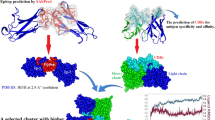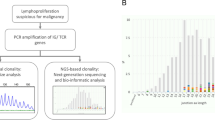Abstract
Chronic Myeloid Leukemia (CML) is a clonal myeloproliferative disease characterized by the occurrence of the Bcr-Abl fusion oncoprotein, which resulted from a reciprocal translocation between chromosomes 9 and 22. The Golgi complex-localized protein 1(GLG1) was identified by mass spectrometry as a potential interaction partner to the pleckstrin homology (PH) domain of the Bcr-Abl oncoprotein. The GLG1 protein is a transmembrane protein known also as MG-160, ESL-1, and CFR-1. Irregularities in the GLG1 functions affect the adhesion, mobility, and migration of cells. In this study, the interaction between the GLG1 protein and the Bcr-Abl oncoprotein is shown for the first time. With imunofluorescence and confocal microscopy, colocalization of the GLG1protein and the Bcr-Abl oncoprotein to the Golgi complex has been detected. A GLG1 protein form phosphorylated at the tyrosine site in K562 cells has also been detected, and Tyr phosphorylation sites for GLG1 isoforms were predicted. The authors believe that the oncoprotein phosphorylates the GLG1 protein, at the cost of its Abl part, during the GLG1–Bcr-Abl protein interaction in the Golgi complex, thus affecting its activity and disrupting the descending signaling pathways that may be crucial for the development and progression of the disease.





Similar content being viewed by others
REFERENCES
Salem, A., Loghavi, S., Tang, G., Huh, Y.O., Jabbour, E.J., Kantarjian, H., Wang, W., Hu, S., Luthra, R., Medeiros, L.J., and Khoury, J.D., Myeloid neoplasms with concurrent BCR-ABL1 and CBFB rearrangements: a series of 10 cases of a clinically aggressive neoplasm, Am. J. Hematol., 2017, vol. 92, no. 6, pp. 520–528.https://doi.org/10.1002/ajh.24710
Flis, S. and Chojnacki, T., Chronic myelogenous leukemia, a still unsolved problem: pitfalls and new therapeutic possibilities, Drug. Design. Dev. Ther., 2019, vol. 13, pp. 825–843. https://doi.org/10.2147/DDDT.S191303
Telegeev, G.D., Dubrovska, V.A., Nadgorna, V.A., Dybkov, M.V., Zavelevich, M.P., Maliuta, S.S., and Gluzman, D.F., Immunocytochemical study of Bcr and Bcr-Abl localization in K562 cells, Exp. Oncol., 2010, vol. 32, no. 2, pp. 81–83.
Quintás-Cardama, A. and Cortes, J., Molecular biology of bcr-abl1-positive chronic myeloid leukemia, Blood, 2009, vol. 113, pp. 1619–1630. https://doi.org/10.1182/blood-2008-03-144790
Ross, T.S. and Mgbemena, V.E., Re-evaluating the role of BCR/ABL in chronic myelogenous leukemia, Mol Cell Oncol., 2014, vol. 1, no. 3, p. 963450. https://doi.org/10.4161/23723548.2014.963450
Järas, M., Johnels, P., Agerstam, H., Lassen, C., Rissler, M., and Edén, P., Expression of P190 and P210 BCR/ABL1 in normal human CD34(+) cells induces similar gene expression profiles and results in a STAT5-dependent expansion of the erythroid lineage, Exp. Hematol., 2009, vol. 37, no. 3. pp. 367–375. https://doi.org/10.1016/j.exphem.2008.11.003
Aladag, E. and Haznedaroğlu, I.C., Current perspectives for the treatment of chronic myeloid leukemia, Turc. J. Med. Sci., 2019, vol. 11, no. 49 (1), pp. 1–10. https://doi.org/10.3906/sag-1810-81
Colicelli, J., ABL tyrosine kinases: evolution of function, regulation, and specificity, Sci. Signal., 2010, vol. 14, no. 3, pp. 139–141.
Miroshnychenko, D., Dubrovska, A., Maliuta, S., Telegeev, G., and Aspenstrom, P., Novel role of pleckstrin homology domain of the Bcr-Abl protein: analysis of protein-protein and protein-lipid interactions, Exp. Cell. Res., 2010, vol. 316, no. 4, pp. 530–542. https://doi.org/10.1016/j.yexcr.2009.11.014
Zarbock, A., Ley, K., McEver, R.P., and Hidalgo, A., Leukocyte ligands for endothelial selectins: specialized glycoconjugates that mediate rolling and signaling under flow, Blood, 2011, vol. 22, no. 118 (26), pp. 6743–6751. https://doi.org/10.1182/blood-2011-07-343566
Mourelatos, Z., Gonatas, J.O., Cinato, E., and Gonatas, N.K., Cloning and sequence analysis of the human MG160, a fibroblast growth factor and E-selectin binding membrane sialoglycoprotein of the Golgi apparatus, DNA Cell. Biol., 1996, vol. 15, no. 12, pp. 1121–1128.https://doi.org/10.1089/dna.1996.15.1121
Crou, S., Mezitis, S.G., Stieber, A., Gonatas, J.O., Goud, B., and Gonatas, N.K., Immunocytochemical visualization of the Golgi apparatus in several species, including human, and tissues with an antiserum against MG-160, asialoglycoprotein of rat Golgi apparatus, J. Histochem. Cytochem., 1990, vol. 38, no. 7, pp. 957–963. https://doi.org/10.1177/38.7.2355176
Planche, A., Bacac, M., and Stamenkovic, I., The Golgi protein GLG1 participates in tumor progression, Cancer Res., 2012, vol. 72, pp. 3245–3245. https://doi.org/10.1158/1538-7445.AM2012-3245
Yasmin-Karim, S. and King, M.R., Messing E.M., and Lee, Y.F., E-selectin ligand-1 controls circulating prostate cancer cell rolling/adhesion and metastasis, Oncotarget., 2014, vol. 5, no. 23, pp. 12097–12110. https://doi.org/10.18632/oncotarget.2503
Steegmaier, M., Borges, E., Berger, J., Schwarz, H., and Vestweber, D.J., The E-selectin-ligand ESL-1 is located in the Golgi as well as on microvilli on the cell surface, Cell Sci.,1997, vol. 110, no. 6, pp. 687–694.
Ahn, J., Febbraio, M., and Silverstein, R.L., A novel isoform of human Golgi complex-localized glycoprotein-1 (also known as E-selectin ligand-1, MG-160 and cysteine-rich fibroblast growth factor receptor) targets differential subcellular localization, J. Cell Sci., 2005, vol. 118, pp. 1725–1731. https://doi.org/10.1242/jcs.02310
Steegmaier, M., Levinovitz, A., Isenmann, S., Borges, E., Lenter, M., Kocher, H.P., Kleuser, B., and Vestweber, D., The E-selectin-ligand ESL-1 is a variant of a receptor for fibroblast growth factor, Nature, 1995, vol. 16, no. 373 (6515), pp. 615–620. https://doi.org/10.1038/373615a0
Miyaoka, Y., Kato, H., Ebato, K., Saito, S., Miyata, N., Imamura, T., and Miyajima, A., Retention in the Golgi apparatus and expression on the cell surface of Cfr/Esl-1/ Glg-1/MG-160 are regulated by two distinct mechanisms, Biochem. J., 2011, vol. 15, no. 440 (1), pp. 33–41. https://doi.org/10.1042/BJ20110318
Treng, Y.T., Li, W., Chen, C.H., Zhang, S., Chen, J.W., Zhou, X.Z., and Liu, C.C., IIIDB: a database for isoform-isoform interactions and isoform network modules, BMC Genomics, 2015, vol. 16 (suppl 2), p. S10.https://doi.org/10.1186/1471-2164-16-S2-S10
Dunn, K., Kamocka, I., and McDonalc, J., Apractical guide to evaluating colocalization in biological microscopy, Cell Physiol., 2011, vol. 300, no. 4, pp. 723–742. https://doi.org/10.1152/ajpcell.00462.2010
Zinchuk, V., Zinchuk, O., and Okada, T., Quantitative colocalization analysis of multicolor confocal immunofluorescence microscopy images: pushing pixels to explore biological phenomena, Acta Histochem. Cytochem., 2007, vol. 40, pp. 101–111. https://doi.org/10.1267/ahc.07002
McDonald, J. and Dunn, K., Statistical tests for measures of colocalization in biological microscopy, J. Microscopy, 2013, vol. 255, no. 3, pp. 295–302. https://doi.org/10.1111/jmi.12093
Wadleigh, M., Daniel, J., and DeAngelo, JamesD., Griffin and Richard, M., After chronic myelogenous leukemia: tyrosine kinase inhibitors in other hematologic malignancies, Blood, 2005, vol. 105, pp. 22–30. https://doi.org/10.1182/blood-2003-11-3896
Antonenko, S.V., Gurianov, D.S., and Telegeev, G.D., Colocalization of USP1 and PH domain of Bcr-Abl oncoprotein in terms of chronic myeloid leukemia cell rearrangements, Cytol. Genets, 2016, vol. 50, no. 5, pp. 352–356. https://doi.org/10.3103/s009-5452716050029
Gurianov, D.S., Antonenko, S.V., and Telegeev, G.D., Colocalization of cortactin and PH domain of BCR in HEK293T cells and its potential role in cell signaling, Biopolym. Cell, 2016, vol. 32, no. 1, pp. 26–33. https://doi.org/10.7124/bc.000909
Author information
Authors and Affiliations
Corresponding author
Ethics declarations
The authors declare that they have no conflict of interest. This article does not contain any studies involving animals or human participants performed by any of the authors.
Additional information
Translated by N. Tarasyuk
About this article
Cite this article
Antonenko, S.V., Kravchuk, I.V. & Telegeev, G.D. Interaction of Bcl-Abl Oncoprotein with the Glg1 Protein in K562 Cells: its Role in the Pathogenesis of Chronic Myeloid Leukemia. Cytol. Genet. 54, 48–54 (2020). https://doi.org/10.3103/S0095452720010028
Received:
Revised:
Accepted:
Published:
Issue Date:
DOI: https://doi.org/10.3103/S0095452720010028




